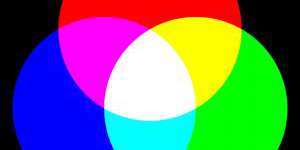
Additive and subtractive color models describe how color is created. They are not competing theories — rather, these models are the two most common and practical ways to create the perception of color. The basis behind these color models lies in breaking the visible light spectrum into its most dominant regions — red, green and blue. In doing so, additive and subtractive color mixing allows the human eye to create a whole spectrum of colors.
The difference between additive vs. subtractive color is in the ways color is created. Let’s discover how these color models differ, which color models are used for what purposes and how to measure additive and subtractive color.
What Is Additive Color (RGB)?
Also known as the RGB color model, additive color is the process of adding one set of wavelengths to another to create a new color — thus the term additive. The visible light spectrum’s primary colors — red, green and blue — are mixed in different combinations and at varying levels of intensity to produce secondary colors.
By adding all the different wavelengths of natural light, the eye sees white light rather than each color. When no light is present, the eye perceives black.
What Is the RGB Color Model Used For?
Today, the additive color model is primarily used to visualize, represent and display images in electronic systems, such as TVs, computer monitors and mobile phones. Because these are light-emissive devices, they start as black and add red, green and blue light to produce the spectrum of colors. When you create a design on your computer or tablet, you use the RGB color model.


